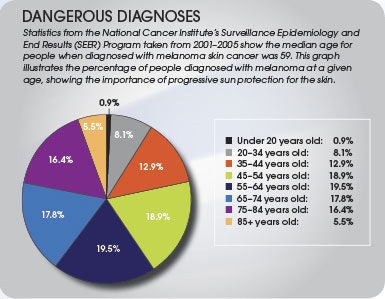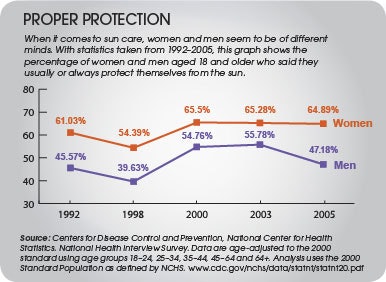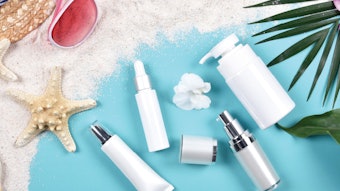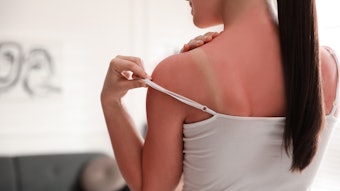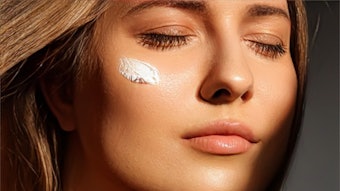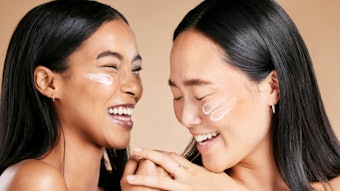
Men today, particularly older men, are developing and even dying from melanoma at increasingly alarming rates. Some contributing factors are cultural, while others are physiological. Caring for skin, hair and nails with specialty products has traditionally been viewed as a female endeavor and therefore not appealing to men. Unfortunately, this means men traditionally have not used sunscreen, let alone other advantageous skin care products.
The lines between what practices are stereotypically considered male and female are beginning to blur as people live longer and men feel the need to preserve their youthful appearance to survive in an increasingly competitive career landscape. Overcoming these stereotypes is more pertinent than ever, not only to keep skin healthy and looking good, but more importantly to keep male clients from suffering and often dying from this preventable form of cancer.
Skin care professionals need to work toward making the idea of men caring for their skin more common and acceptable. Truly understanding the important differences in the physiology of men’s skin, men’s typical purchasing psychology and the significant statistics on the increasing numbers of melanoma cases in men can help make this paradigm shift a reality.
Physiological differences
To help male clients, it is important to understand the differences in the skin between men and women. Hormones play a significant role. In males, androgens are the dominant hormones and continually increase throughout puberty before leveling off in the early 20s. Higher levels of the androgen testosterone are responsible for increased hair growth and sebum production, and androgen hormones also drive acne, as they increase the size of sebaceous glands and the amount of oil secreted. The enzyme 5 alpha-reductase works within the follicles to convert testosterone to 5-dehydrotestosterone (DHT). Androgen receptors at the base of hair follicles are highly susceptible to DHT, and with increased DHT come higher rates of acne.
In addition to more oil production and the growth of facial hair, men have thicker skin than women. These characteristics serve men well as they work to mask the visible signs of aging. In 2007, the Canadian Academy of Pathology published findings in the journal Laboratory Investigation demonstrating that androgens play an important role in the production of collagen and other matrix proteins. This fact helps to explain the much slower rates of wound-healing in elderly men who have far lower testosterone levels than their younger counterparts.
A healthy and strong matrix gives the skin its shape, resiliency and resistance to wrinkling. Men do not begin to show their age as early as women, making aging easier for them to ignore. This partially explains why men do not seek out skin care products and treatments as early in life as women.
Lifestyle considerations
Daily shaving helps men’s skin retain its youthful appearance as well, as it provides daily exfoliation of excess stratum corneum. This regular removal of build-up keeps the surface smooth and skin cells turning over at a healthy rate.
However, poor shaving habits can lead to dryness and other negative side effects, such as pseudofolliculitis barbae. This condition occurs when coarse hairs are cut off and then lie below the surface of the follicle. As the hair grows, the sharp end of the hair will often grow into the side of the follicle rather than out the opening, causing inflammation, irritation and even infection. This is most common in men with curly and coarse hair. The use of topical anti-inflammatory, antibacterial and hydrating ingredients such as salicylic acid, azelaic acid, bisabolol and squalane are typically effective in alleviating these conditions.
The combination of regular exfoliation, thicker skin and increased collagen, with androgens behind the scenes driving oil production, simply helps men stay looking younger longer. Because of this, the typical anti-aging educational and marketing approaches do not have the impact on men that they do on women. It is necessary to change the dialogue to one of protection from the dangers of UV exposure to capture the attention of male clients and start a conversation about skin health.
The psychology
Women have long dealt with imagery in advertising, fashion and movies that depicts the archetypal “perfect” woman as young, thin and beautiful. As a country, the nation’s population has worked to help young girls overcome these notions of female perfection in favor of a healthy body and facial image.
In the past 20 years, however, these same types of images have begun to reappear, only they are now focused on the ‘perfect’ male image. Younger men now paying more attention to their hair, skin and appearance in general, and although comparing oneself to any manufactured vision of perfection is fruitless and counterproductive, this cultural shift has at least helped to increase the use of moisturizer with sunscreen and antioxidants. It has also opened the door to the possibility of sparing this younger generation from the increasing instances of basal cell, squamous cell and melanoma skin cancers in the future.
American men live an average of 73 years and are now, thanks to a slumping economy, working longer than ever. In this increasingly competitive employment environment, men have begun to seek out cosmetic services more frequently. According to the American Society of Aesthetic Plastic Surgery, there has been a 17% increase in cosmetic procedures for American men. That is more than one million procedures in 2007. And according to another beauty trend report from Information Resources Inc., the men’s facial skin care market hit $76.5 million in 2005. This revenue will undoubtedly increase as the desire for healthy, younger-looking skin grows in importance for men.
As skin care professionals, this knowlegde should be used to your advantage to educate your open-minded male clients on the real dangers of skin cancer and the simple preventive measures they can take to guard against it.
Paradigm shift
According to the National Cancer Institute’s Surveillance and Epidemiology and End Results (SEER) Program, an estimated 34,950 men died of melanoma in 2008. The men at the highest risk of developing melanoma are those aged 55–64, followed closely by those 65–74. This group is made up of the men who grew up with macho cultural stereotypes and are typically less open to the discussions of skin care and sunscreen.
You would then expect men aged 75–84 to be even more deeply entrenched in representations of what is considered masculine, and they are, unfortunately, the demographic with the highest melanoma mortality rates in the United States. These statistics make it clear that the use of daily sun protection should be differentiated from the use of typical age-control products focused on women and younger men.
Recently, men’s hesitancy to visit physicians has been slightly improved due to highly publicized pharmaceuticals for common male diseases. This is an opportunity for physicians, clinicians and skin care professionals to initiate discussions about skin cancer risk factors and encourage clients to take precautionary measures, such as regular broad spectrum sunscreen use, limited midday exposure and routine full-body skin examinations by a dermatologist.
Sun protection products must contain avobenzone, titanium oxide, zinc oxide or encamsule to ensure UVA coverage, as the SPF number on a sun protection product refers only to the amount of protection offered against UVB rays. Many medically focused skin care products available today combine lightweight moisturizers and sunscreens, resulting in products that are not thick and fragranced, as some drugstore sunscreens tend to be. Recommend light sunscreen moisturizers with a matte finish that do not leave behind any residue on the skin. This is a good choice for men and will increase their compliance with daily use.
In order to make using products for skin health an easier leap for men, educational efforts and collateral materials should be designed to speak in the male communication style. Men typically respond positively to messages that are clear, straightforward, and driven by facts and results. Make your discussions short and to the point. Offer products that are designed and packaged specifically for men to make the purchase and use of protective skin care products an easy shift. Using tools in your business to make men’s purchases effortless will increase the likelihood of them becoming comfortable as long-term skin protection purchasers.
Guidelines for better skin
Sunscreen acceptance is one of the most important first steps in getting male clients to integrate skin care into their daily routines. Once this hurdle has been overcome, a good second step is a gentle cleanser to help keep the skin clear of bacteria, excess oil and debris. Men want ease of use, so a product that can be kept in the shower and also used for body cleansing will make this addition to their regimen easier.
As men become comfortable with these categories of skin health products, it is more likely they will believe and accept the benefits of other anti-aging and antioxidant-based products. Adopting a simple yet complete daily regimen will not only strengthen men’s skin and provide increased environmental protection, but will also help them stay looking younger longer.
The health of all of clients’ skin is always the prime objective. Working to convert male clients into believers of products that protect and promote skin health is becoming ever more important, and achieving this change in male perspective toward sun protection products will hopefully help to reduce the staggering numbers of melanoma and other skin cancers in American men.
